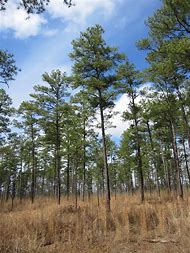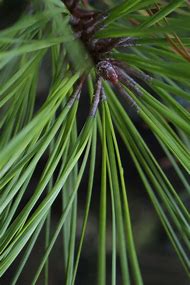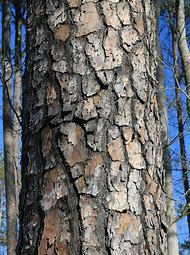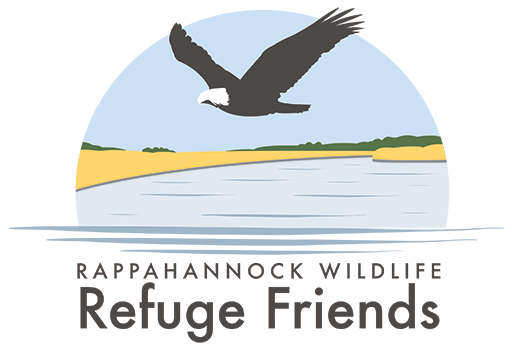Loblolly Pine

Loblolly Pine (Old-Field Pine) Pinus taeda L.
Mature Size: 90 to 110 feet in height, 2 to 3 feet in diameter
Form: Crown oval and somewhat open, tall and straight trunk; lower branches self prune and remaining lower branches droop, while the higher branches grow upward.
Where to Find Them: Old fields, sandy soils where water table is close to surface, borders of swamps, and other imperfectly-drained sites.

Needles: Bundles of 3, stiff, 6 to 9 inches long, slender, and pale green.
Cones: Oblong, 2 to 6 inches long, light reddish to brown, with a spine at the tip of each scale; remain on tree for a year after seed-fall.
Wildlife use: Like the oaks, the value of pines to wildlife cannot be underestimated. Loblolly pine stands provide habitat for pine warblers, brown-headed nuthatches, deer, squirrels, quail, turkey and other wildlife species, as well as communal roost sites for eagles. Large loblolly pines are a common nesting site for ospreys and bald eagles. Loblolly is the most often seen pine species on the Refuge.

Bark: Young tree bark is scaly and red to grayish-brown; older bark is thick, reddish to brown, divided by shallow fissures into broad, flat-topped plates covered with thin scales
Use the “RETURN” button to return to the tree list
OR
Scan the QR code on the next tree sign
Upcoming Events
Rappahannock Wildlife Refuge Friends
P.O. Box 1565
Warsaw, VA 22572-1565
